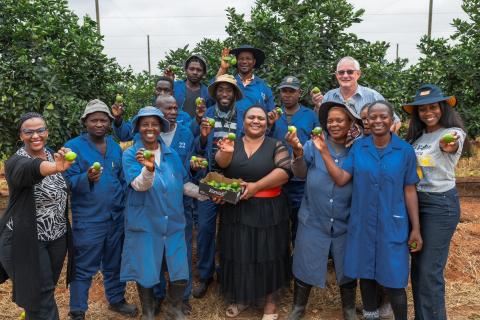
The 668 rhinos killed in our country last year is now a tragic matter of public record, and while many of us hoped that we might be able to turn the tide against the ever-increasing poaching figures in 2013, this is already looking less and less likely.
As a passionate conservationist, it makes me particularly sad that the number of poachings comes as no surprise. Last year we predicted the figure of poached rhino to reach a new record of over 600 by midyear, yet still we seemed helpless to stop the tragic killings.
What are we doing wrong?
It is easy to blame the authorities and rhino activists for incompetence or lack of interest, but neither is true. The fact is that the heart-wrenchingly high poaching figures were reached despite the enormous and often heroic efforts of so many conservationists, police offers and rhino farmers. Of course there are things that could have been done better or faster, but by and large the public and private sectors have repeatedly demonstrated their commitment to curbing the killings.
So the question remains: what exactly are we doing wrong? How can rhino poaching figures continue to rise despite the hard work of so many well-intentioned institutions and individuals?
I am certainly not an expert on conservation policy, but from my years on the cricket-field I am used to hard work paying off. If a team is well prepared and performs at its best, the results usually follow. Sadly, this doesn’t seem to be the case with South Africa’s rhino conservation.
Play By A Different Set of Rules?
It is this insight which prompted me to think that maybe the rules of the game are the problem. A rhino is worth more dead than alive, which means that farmers are increasingly weary of buying new rhino as the cost of protection and security has become unsustainable for many. Equally, conservation agencies are not permitted to benefit from the value of the horns of those animals that have died a natural death. How then can we expect farmers and agencies to invest their scarce resources in the future of the species? These rules leave us with a flourishing illegal horn trade across international boundaries. It may be controversial to say, but I have often thought that a regulated, legal rhino horn-trading industry would benefit the species as a whole.
But as things stand, the statistics speak for themselves and they are blatantly, depressingly clear: none of the current solutions are working. In fact, poachers seem to be constantly a step ahead of the authorities, able to commit their atrocious crimes in secret and without consequence.
A Potential Solution
Although I don’t proclaim to know how to solve the situation, I do believe that we all need to work together to find a common, workable cure to the dampen of rhino poaching. And by all of us I mean government, NGOs, the private sector and individual citizens.
A myriad of theories abound about how to halt the poachings, but they are all complex and carry substantial risk. I know that this isn’t a situation that is conducive to easy solutions, but one thing I am sure of: we need a reliable, effective management system that records the exact state of the rhino population now and tracks key trends into the future. We have to give the authorities the information they need to guide their decision-making on a daily basis. They should be able to link poachers with crime scenes and have solid evidence that can withstand scrutiny in court. This is possible to achieve through the rapid expansion of the Rhino DNA Index System (RhODIS), established and run at the Veterinary Genetics Laboratory at the University of Pretoria, which I am supporting through my partnership with The South African Breweries (SAB).
By joining forces with SAB to set up SAB Boucher Conservation and launch the “Rhino in Safe Hands” campaign I am taking those small steps that I believe will turn the statistics in favour of our rhino. We need more partnerships like this one and I encourage all readers to work together for the day where illegal poachers will be the losers and the rhino the winner.



